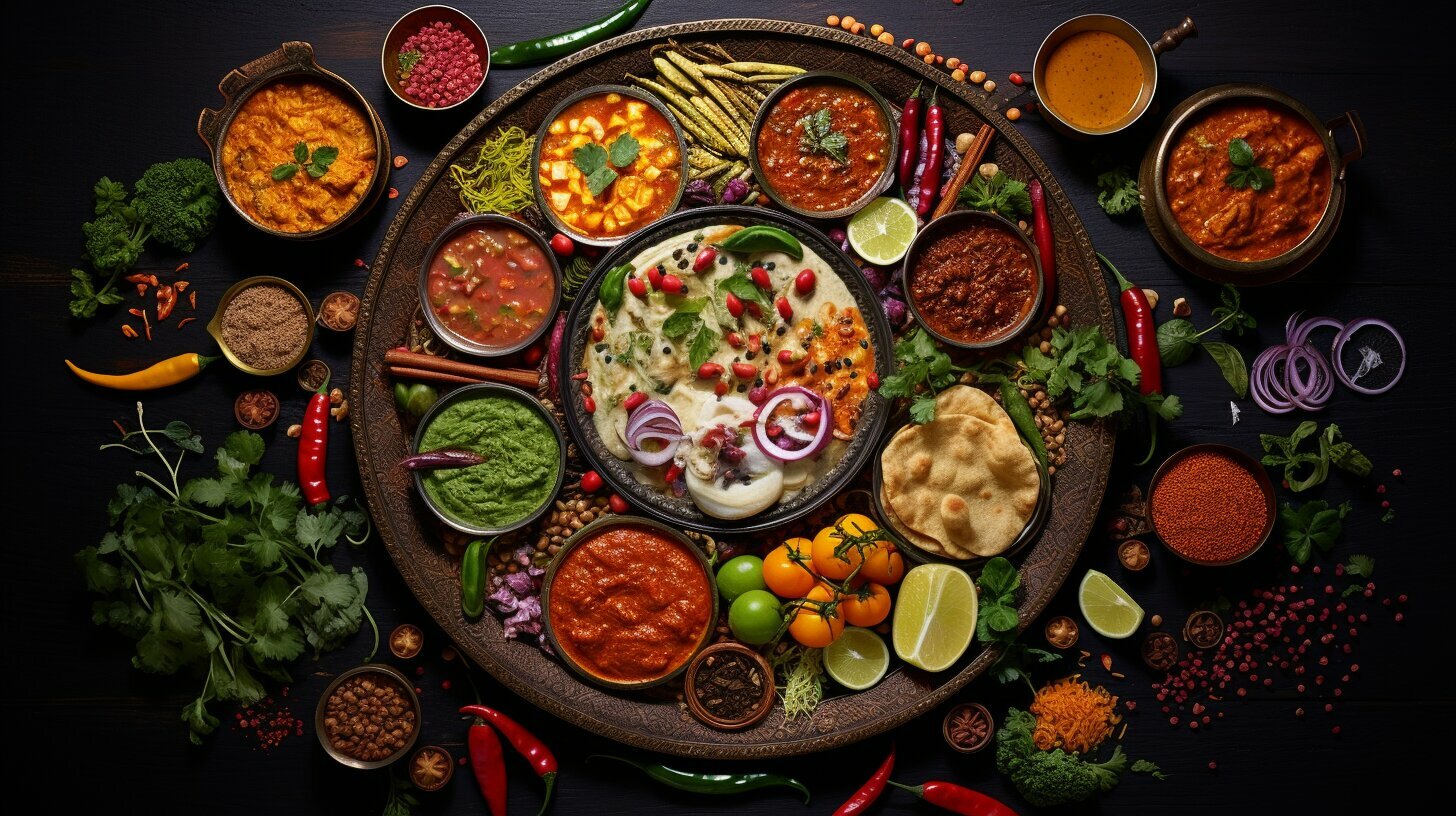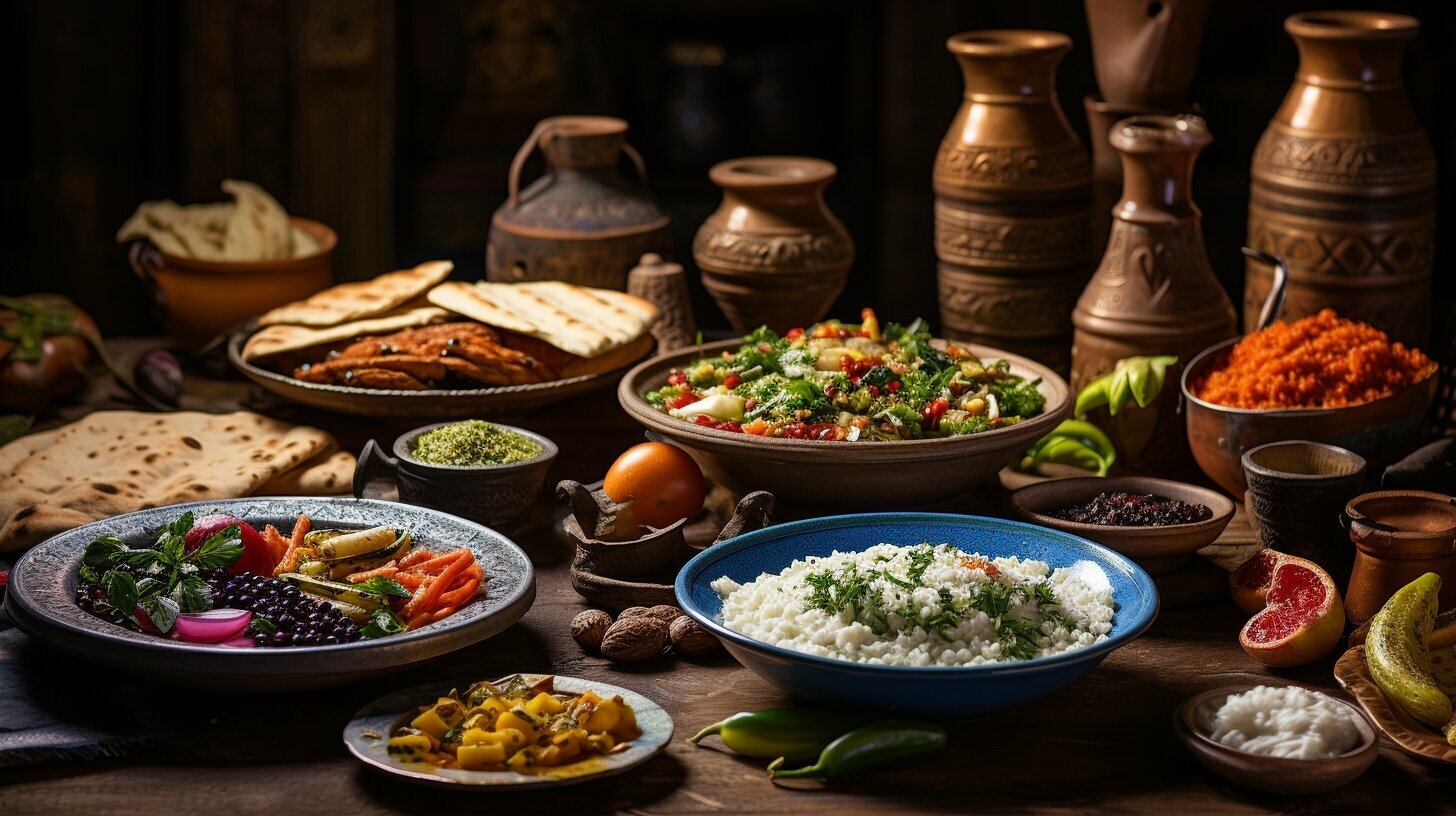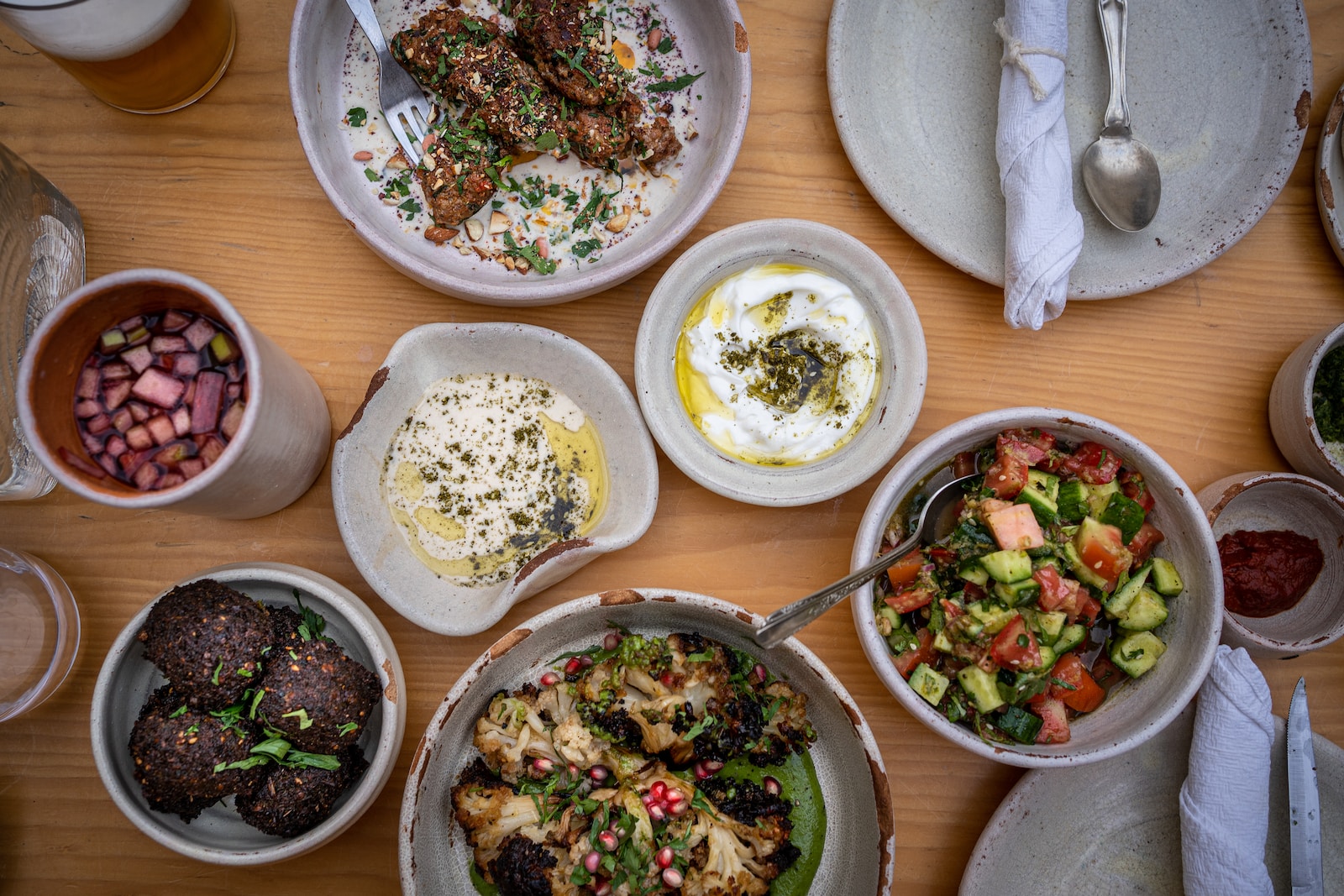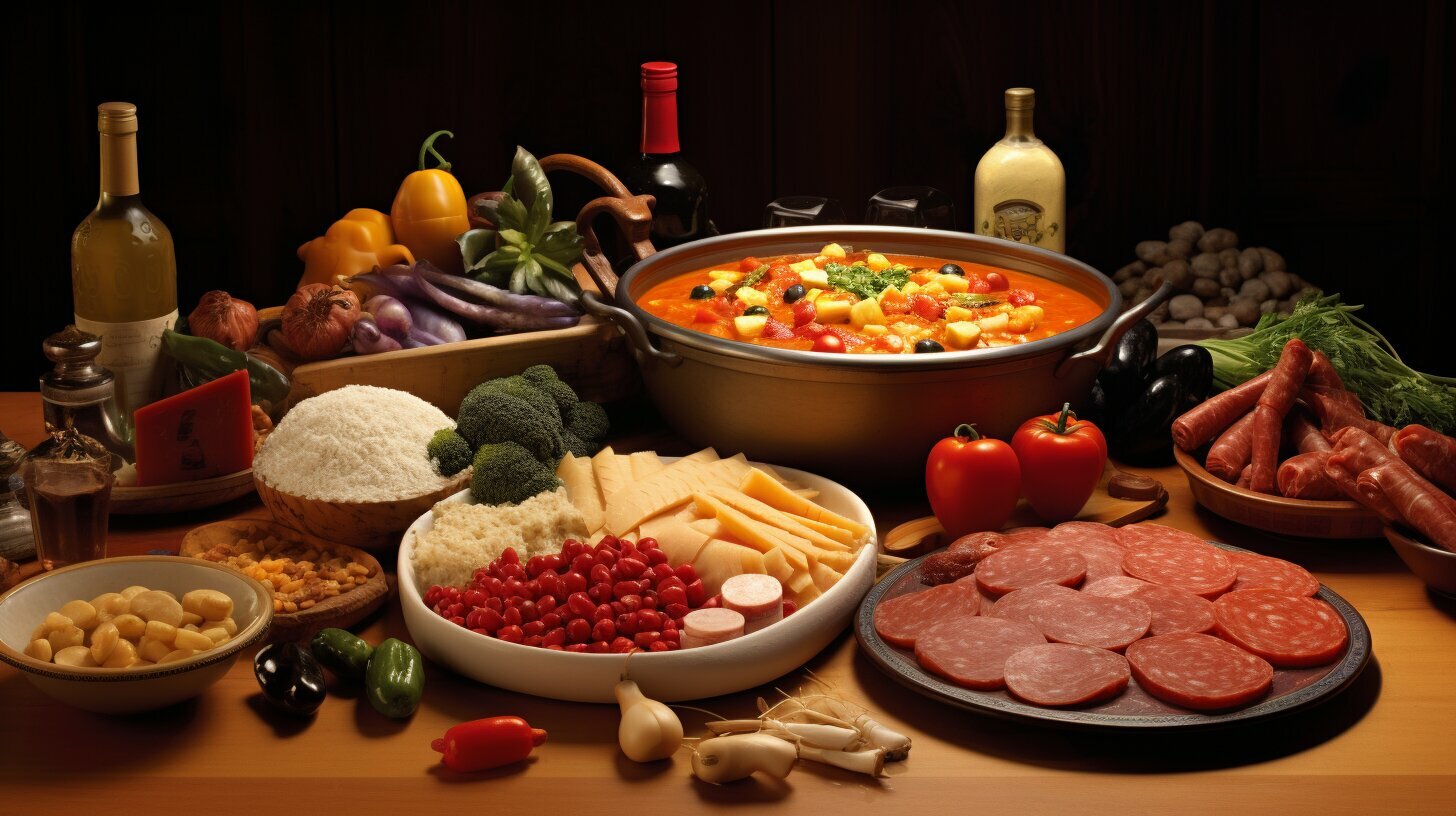Indian and Pakistani cuisine are both renowned for their rich flavors and cultural significance. Despite having many similarities, these culinary traditions have several differences that set them apart. In this article, we will explore the key differences between Indian and Pakistani cuisine, the unique characteristics of each cuisine, and the historical and cultural influences that have shaped them.
Key Takeaways
- Indian and Pakistani cuisine share many similarities, but also have distinct differences.
- Indian cuisine is characterized by the use of aromatic spices, diverse cooking techniques, and a variety of regional dishes.
- Pakistani cuisine features influences from Central Asia and the Middle East, and a wide range of spices and flavorful dishes.
- The differences between Indian and Pakistani cuisine are shaped by cultural, historical, and geographical factors.
- Iconic dishes such as biryani, tandoori chicken, and kebabs are popular in both Indian and Pakistani cuisine.
Indian Cuisine Characteristics
Indian cuisine is renowned for its vibrant flavors and diverse array of dishes. It is characterized by the use of aromatic spices, which not only add flavor but also have numerous health benefits.
Indian cooking techniques are also varied, with methods such as simmering, sautéing, and frying used to create a wide range of dishes. Each region in India has its own specialties, resulting in a vast array of unique and delicious dishes.
Some of the most popular Indian spices include cumin, coriander, turmeric, ginger, and cardamom. These spices are used in a variety of ways, from being added to dishes at the beginning of cooking to being used as a seasoning at the end.
Some well-known Indian dishes include chicken tikka masala, butter chicken, samosas, and biryani. These dishes are beloved not only in India but throughout the world, with Indian cuisine being one of the most popular ethnic cuisines globally.
In summary, Indian cuisine is known for its aromatic spices, diverse cooking techniques, and a wide variety of regional specialties. It is a cuisine that is rich in flavor, vibrant in color, and celebrated around the world.
Pakistani Cuisine Characteristics
Pakistani cuisine is a delightful blend of flavors and spices. Its unique characteristics are influenced by its geographical location, history, and culture. Pakistani cuisine often combines the traditional cooking techniques of Central Asia and the Middle East while incorporating local ingredients.
Pakistani food is known for its generous use of spices, including cumin, coriander, turmeric, and chili powder. These spices add depth and complexity to the dishes and create a distinct flavor profile. Pakistani cuisine also utilizes rock salt, black pepper, and cinnamon in its cooking.
Some popular Pakistani dishes include biryani, haleem, nihari, and kebabs. Biryani is a rice dish that is layered with meat, vegetables, and spices. Haleem is a type of stew that is made from lentils, wheat, and meat and is often served during Ramadan. Nihari is a spicy meat stew that is typically served with bread. Kebabs are grilled meat skewers that are marinated in spices and herbs.
Key Differences Between Indian and Pakistani Cuisine
While there are similarities between Indian and Pakistani cuisine, there are also distinct differences that set the two apart. Indian cuisine is known for its diverse use of spices, while Pakistani cuisine is influenced by Central Asia and the Middle East. Let’s explore some of the key differences between Indian and Pakistani cuisine.
Flavors
Indian cuisine is characterized by its use of a wide range of spices, which vary from region to region. Some of the most commonly used spices include cumin, coriander, turmeric, and chili powder. The use of these spices gives Indian food its signature bold and complex flavors. On the other hand, Pakistani cuisine tends to be less spicy and more aromatic, with a greater emphasis on the natural flavors of the ingredients used.
Spices
While both Indian and Pakistani cuisines heavily rely on the use of spices, the types of spices used in each cuisine differ. In Indian cuisine, the use of chili peppers and garam masala (a blend of spices that typically includes cinnamon, cloves, and cardamom) is common. In Pakistani cuisine, spices such as cumin, coriander, and ginger are used in abundance. Pakistani cuisine also incorporates a spice blend called panch phoron, which typically includes fennel, nigella, fenugreek, mustard seeds, and cumin seeds.
Cooking Techniques
Indian cuisine is characterized by its diverse range of cooking techniques, which vary from region to region. Some of the most common cooking methods include roasting, grilling, and frying. Meanwhile, Pakistani cuisine often relies on slow-cooking techniques, such as braising and stewing, which allow for the flavors of the ingredients to meld together over time.
Regional Specialties
Both Indian and Pakistani cuisines are incredibly diverse, with each region having its own unique specialties. In Indian cuisine, some of the most popular regional dishes include biryani (a spiced rice dish), dosa (a fermented crepe made from rice batter), and butter chicken (a creamy tomato-based chicken curry). In Pakistani cuisine, some popular regional dishes include biryani (similar to the Indian version, but with a different spice blend), seekh kebab (a spiced ground meat skewer), and nihari (a slow-cooked meat stew).
As you can see, Indian and Pakistani cuisine both have their own unique characteristics that set them apart. Whether you’re a fan of aromatic spices or slow-cooking techniques, there’s something to be appreciated in both culinary traditions.
Influences on Indian and Pakistani Cuisine
The culinary traditions of both India and Pakistan have been heavily influenced by factors such as history, geography, and culture. Understanding the influences on their cuisine is important to appreciate the unique flavors and dishes of both countries.
Historical Influences
Both India and Pakistan were ruled by various empires and dynasties throughout their history, which had a significant impact on their culinary traditions. The Mughal empire, which ruled India for several centuries, introduced Persian and Central Asian influences to Indian cuisine, resulting in the creation of iconic dishes such as biryani and kebabs. Similarly, the Persian influences on Pakistani cuisine can be seen in dishes such as nihari and haleem.
Cultural Influences
The diverse cultures of both India and Pakistan also contribute to their unique culinary traditions. India has over 20 official languages and each region has its own distinct cuisine, resulting in a wide variety of dishes and flavors. Pakistani cuisine is also influenced by the country’s diverse population, with dishes originating from regions such as Punjab, Sindh, and Balochistan.
Geographical Influences
The geography of both India and Pakistan has also had an impact on their cuisine. Coastal regions of both countries have a strong seafood culture, with dishes such as fish curry and shrimp biryani being popular. In addition, the northern regions of both countries have a harsher climate, leading to the use of warming spices and hearty dishes.
Overall, the influences on Indian and Pakistani cuisine are rich and varied, resulting in unique and diverse culinary traditions. Understanding these influences can deepen our appreciation for the distinct flavors and dishes of both countries.
Signature Dishes from India and Pakistan
One cannot talk about Indian cuisine without mentioning the world-renowned dish, Chicken Tikka Masala. This rich and creamy dish consists of marinated chicken pieces that are grilled and then simmered in a tomato-based sauce with a blend of aromatic spices. Another classic Indian dish that has gained international popularity is Palak Paneer, which is a vegetarian dish made from spinach and cottage cheese combined with a creamy tomato-based sauce.
On the Pakistani side, Biryani is a must-try dish for any food lover. This rice dish is made with a variety of meats, such as chicken, beef, or lamb, mixed with a blend of fragrant spices and basmati rice. The dish is then garnished with fried onions, cilantro, and boiled eggs. Another famous Pakistani dish is Haleem, which is a slow-cooked stew made with a combination of lentils, wheat, and either chicken or beef. The dish is served with a side of fresh lemon and fried onions.
Both countries take great pride in their signature dishes and have contributed immensely to the world of culinary arts.
Conclusion
In conclusion, the Difference Between Indian and Pakistani Cuisine stems from a variety of cultural, historical, and regional factors. Both culinary traditions offer a rich and diverse array of flavors and dishes that are beloved worldwide. Indian cuisine is known for its use of aromatic spices, diverse cooking techniques, and regional specialties such as biryani and dosa. Pakistani cuisine, on the other hand, is influenced by Central Asia and the Middle East and is characterized by its use of unique spices and popular dishes such as kebab and biryani.
Despite their differences, both Indian and Pakistani cuisine share some common influences, including Mughal, Persian, and British influences that have shaped their culinary traditions. Both countries also have signature dishes that are highly regarded both within their respective cultures and internationally.
Whether you’re a foodie, traveler, or simply someone who appreciates good cuisine, exploring the difference between Indian and Pakistani cuisine is an exciting journey that is sure to leave your taste buds satisfied. So, next time you’re looking for a culinary adventure, be sure to try out some of the delicious dishes from these two amazing culinary traditions.
FAQ
Q: What are the key differences between Indian and Pakistani cuisine?
A: Indian and Pakistani cuisine have many similarities, but there are also some key differences. Indian cuisine is known for its use of aromatic spices and diverse regional dishes, while Pakistani cuisine has influences from Central Asia and the Middle East. The flavors and spices used in both cuisines can vary, and there are also differences in cooking techniques and regional specialties.
Q: What are some popular Indian spices?
A: Some popular Indian spices include turmeric, cumin, coriander, cardamom, and garam masala. These spices are used to add flavor, aroma, and depth to Indian dishes.
Q: What are some popular Pakistani dishes?
A: Some popular Pakistani dishes include Biryani, Nihari, Haleem, and Kebabs. These dishes often feature a combination of meat, spices, and aromatic flavors.
Q: How have historical and cultural influences shaped Indian and Pakistani cuisine?
A: Indian and Pakistani cuisine have been shaped by a variety of historical and cultural influences. The Mughal Empire, Persian influences, and British colonization have all played a role in shaping the culinary traditions of both countries. These influences can be seen in the use of spices, cooking techniques, and the types of dishes that are popular in each cuisine.
Q: What are some signature dishes from India and Pakistan?
A: Some signature dishes from India include Butter Chicken, Masala Dosa, and Tandoori Chicken. From Pakistan, some signature dishes include Chicken Karahi, Seekh Kebabs, and Lahori Cholay. These dishes represent the unique flavors, ingredients, and cultural significance of each cuisine.
 Skip to main content
Skip to main content


